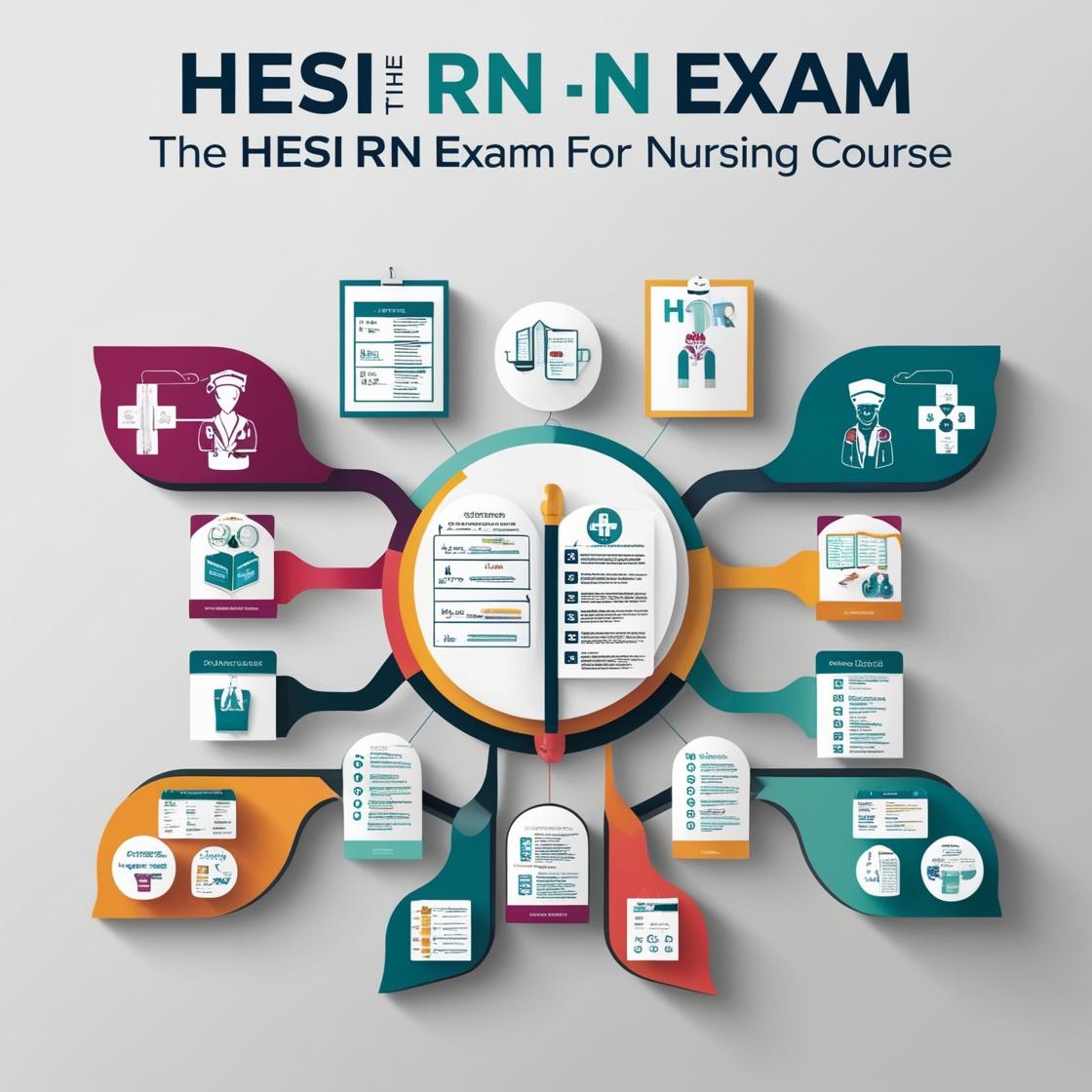HESI RN
RN HESI Exit Exam Capstone
1. While providing home care to a client with congestive heart failure, the nurse is asked how long diuretics must be taken. What is the nurse’s best response?
- A. As you urinate more, you will need less medication to control fluid.
- B. You will have to take this medication for about a year.
- C. The medication must be continued so the fluid problem is controlled.
- D. Please talk to your health care provider about medications and treatments.
Correct answer: C
Rationale: Diuretics must be continued as long as the fluid problem persists to prevent heart failure symptoms.
2. A client with pneumonia is receiving intravenous (IV) antibiotics. Which assessment finding indicates that the client's condition is improving?
- A. Client's respiratory rate decreases from 24 to 20 breaths per minute
- B. White blood cell count decreases to normal range
- C. Client reports increased energy levels
- D. Cough becomes productive with green sputum
Correct answer: B
Rationale: A decrease in white blood cell count indicates that the infection is responding to treatment and the client's condition is improving. Monitoring the white blood cell count is a more objective indicator of the body's response to the antibiotics. Choices A, C, and D may also be positive signs, but they are less specific and may vary among individuals. Respiratory rate alone may not be sufficient to indicate improvement, as other factors can influence it. Energy levels and cough characteristics are subjective and may not always correlate with the effectiveness of antibiotic treatment.
3. A client reports dizziness when standing up quickly. What advice should the nurse give?
- A. Encourage the client to drink more fluids.
- B. Change positions slowly to prevent dizziness.
- C. Report the symptom to the healthcare provider immediately.
- D. Limit physical activity to avoid triggering dizziness.
Correct answer: B
Rationale: The correct advice for a client experiencing dizziness when standing up quickly is to change positions slowly to prevent dizziness. This symptom is suggestive of postural hypotension, where a sudden change in position can lead to a drop in blood pressure, causing dizziness. Encouraging the client to drink more fluids (Choice A) may be beneficial for other conditions but is not directly related to the prevention of dizziness in this case. Reporting the symptom to the healthcare provider immediately (Choice C) is important if the dizziness is persistent or severe, but the immediate action to prevent it is to change positions slowly. Limiting physical activity (Choice D) may not necessarily address the underlying cause of dizziness in this context.
4. In monitoring tissue perfusion in a client following an above the knee amputation (AKA), which action should the nurse include in the plan of care?
- A. Evaluate closest proximal pulse.
- B. Note amount and color of wound drainage.
- C. Observe for swelling around the stump.
- D. Assess skin elasticity of the stump.
Correct answer: A
Rationale: After an amputation, monitoring the pulse closest to the stump is crucial in evaluating tissue perfusion and the overall health of the limb. Swelling and changes in perfusion can indicate complications such as blood clots or infection. Assessing the proximal pulse helps the nurse ensure adequate blood flow to the remaining limb, thereby preventing further complications. Choices B, C, and D are less directly related to monitoring tissue perfusion in this scenario and are more focused on wound healing and stump care.
5. A client is prescribed metformin for type 2 diabetes. What should the nurse emphasize in the client's teaching?
- A. Take the medication with meals to reduce the risk of GI upset.
- B. Report any muscle pain to the healthcare provider promptly.
- C. Avoid alcohol consumption while taking this medication.
- D. Monitor blood sugar levels regularly to prevent hypoglycemia.
Correct answer: C
Rationale: The correct answer is to avoid alcohol consumption while taking metformin. Alcohol can increase the risk of lactic acidosis when combined with metformin. Choice A is incorrect because metformin is usually recommended to be taken with meals to reduce GI upset. Choice B is important but not the priority; muscle pain is more commonly associated with other diabetes medications. Choice D is incorrect because metformin typically does not cause hypoglycemia but rather helps control blood sugar levels in type 2 diabetes.
Similar Questions

Access More Features
HESI RN Basic
$69.99/ 30 days
- 50,000 Questions with answers
- All HESI courses Coverage
- 30 days access @ $69.99
HESI RN Premium
$149.99/ 90 days
- 50,000 Questions with answers
- All HESI courses Coverage
- 30 days access @ $149.99
